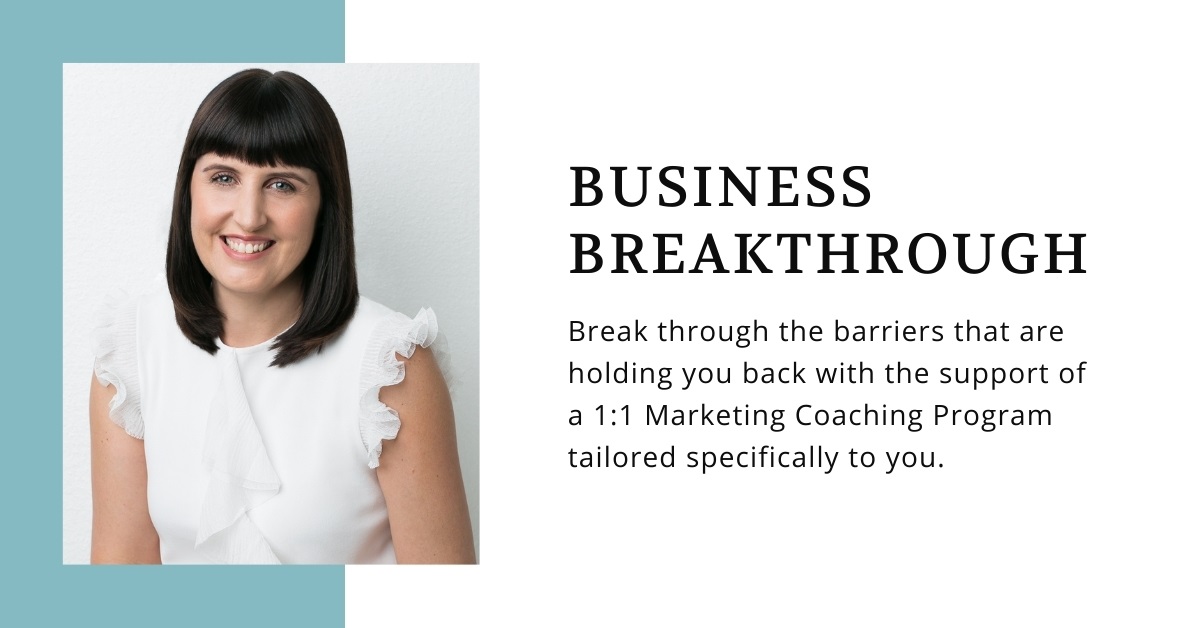How to write a content marketing plan for a service business

So, what is a content marketing plan?
And how do you write one that’s effective in helping you to attract your dream clients?
Well, a content marketing plan is a documented outline of the strategic content that you’ll be creating and publishing to market and promote your service business.
It will include the objectives and goals that you’re trying to achieve with your content marketing, and the audience whom you’re appealing to.
As well as the type of content that you’re going to create, and the places where you’ll be publishing and promoting it.

You may not know where to start when it comes to creating content and writing a marketing plan for your business.
However, there are a series of simple steps you can follow to write an effective content marketing plan for your service business.
In the blog post below, you’ll find the content marketing steps I’ve followed in my own business, and what I teach my coaching clients to do as well.
1. Determine your content marketing objectives
The first step when it comes to writing your content marketing plan is to decide on your marketing objectives.
These are the outcomes that you’d like to achieve, and they will also be used to inform and guide your strategy and the type of content that you’ll end up creating.
Some of the more common content marketing objectives that you may have include:
Increase awareness and visibility: You’ll be creating content that gets your name out there and tells your audience who you are and what you do.
Build authority as an expert: Your may want to highlight your expertise by creating content that demonstrates your in-depth knowledge, experience, or skills.
Stand out from your competition: You may have a particular point of view or opinion that helps you to stand out and can use this to create content that differs from everyone else.
Overcome sales objections: Your target market may be some common fears or objections that you’ll need to overcome first and you can use your content to do this.
Drive more website traffic: The call to action that you use on your content can be designed to drive more people to your website.
Generate leads and sales: This is the type of content that highlights the features and benefits of your services and invites people to schedule an appointment or buy from you.
It’s up to you as to how many content marketing objectives that you want to have, but I would recommend having one main objective and no more than one or two other minor ones to help you stay focused on what you’re trying to achieve.
Not sure where to start when it comes to marketing your service-based small business? That’s where I can help. Get started by downloading my free Ultimate Marketing Checklist by clicking the button below:
2. Set your content marketing goals
Every content marketing plan should include marketing goals that you want to achieve.
That way you can measure what’s working and what’s not when it comes to your content marketing activities and you’ll know where you can make changes to improve.
I suggest using SMART goals, which means they need to be specific, measurable, achievable, realistic, and timely.
Examples of some of the goals that you could set for your content marketing plan include:
- Grow your email list by X subscribers
- Grow the number of social media followers you have by X
- Get X enquiries or discovery calls
- Increase website ranking by X
- Get invited to speak or present at X number of events
It’s important that you align your marketing goals to your objectives, so that you’ll know if you have achieved what you set out to.
RELATED: 7 Steps to setting marketing goals you’ll actually achieve
3. Define your target market
It’s essential that you create content that will be both valuable and appealing to your target market.
So, as part of your content marketing plan, you’ll need to research and define your ideal clients.
This target market research process involves much more than just creating a high-level profile that covers demographics and location.
You’ll also need to dig deeper and uncover what your target market’s most common pain points are right now.
Also, what does your target market want you to help them with or the type of solution they are looking for?
And what fears, objections, or negative perceptions your target market may have already about your types of services.
Once you have this information, you can create content that:
- Provides guidance, tips, or advice for people who are struggling with specific pain points
- Share information about the types of solutions you provide and why they are important
- Overcomes any fears, objections, or negative perceptions that people may have
4. Develop a content strategy to position yourself as an expert
When it comes to creating an effective content marketing strategy, there are a few steps that you’ll need to follow…
Firstly, you’ll want to select the core type of content that you’re going to create.
Perhaps you’ll focus on writing a blog or epic social media captions if you enjoy writing.
If you don’t enjoy writing, you may spend time creating a video series on YouTube or stories on social media.
Alternatively, you may want to start a podcast or present to people at speaking events.
You don’t need to focus on all these options; you just need to pick the core content platform you’ll use to build your audience or follow.
Next, you’ll need to select the content categories or topics you will write or speak about.
I recommend choosing around 5 – 8 content categories that relate to your niche, as this will help you to stay on topic and position you as an expert in your niche.
Finally, you’ll want to consider how you can brand or put a theme around the content that you’re creating.
A content theme will ensure your content becomes more memorable to your audience.
Examples of this approach include branding your podcast with a catchy name, writing 3- or 4-part blog posts that flow on from each other, and structuring your video series around a themed day of the week.
There are many more examples of creating content in a series or theme, but these are provided above as just a few ways to get started.
RELATED: How to create an effective content marketing strategy for a service business
5. Research SEO keywords and plan your content marketing
So, now that you have your content categories, it’s time to plan your content ideas for each of your chosen topics.
When you’re selling services, people will often know what they need or why they need it, but they struggle with getting started or achieving certain results.
As such, I recommend focusing on content that tells your clients WHAT they need to do and WHY they need to do it.
When you follow this method of telling people ‘what’ and ‘why’, then it will help to encourage them to reach out to you for the ‘how’.
I recommend brainstorming three or so ideas for each of the content categories that you have. This method will then ensure you’re never stuck for ideas for what to create.
Before you start writing or producing the content that you’ve planned, it’s also essential that you conduct some search engine optimisation (SEO) keyword research.
Before you start writing or producing the content that you’ve planned, it’s also essential that you conduct some search engine optimisation (SEO) keyword research. #contentmarketing #seomarketing Share on XThis will ensure that whatever content you create actually contains words or titles that will help it to get found online.
This doesn’t just apply to blog posts. Podcasts, YouTube, and social media platforms also have search functionality that looks for keywords.
You’ll also want to plan what call to action you will use to guide your audience on the next steps that you want them to take.
RELATED: How to select the right SEO keywords for your target market

6. Plan and add lead capture elements
To get the most out of your content marketing efforts, you’ll also want to include some activities to capture more leads for your business.
To get the most out of your content marketing efforts, you’ll also want to include some activities to capture more leads for your business. #contentmarketing Share on XThis could include referring to a content upgrade or lead magnet in your blog, during your podcast, or at the end of your speaking event as just some examples.
I’ve found that it’s more time efficient to create lead magnets that align to my content categories, so that I can include the same one on multiple blog articles and don’t need to keep creating lead magnets all the time.
However, you may find opportunities to add a content upgrade to a particular piece of content that adds lots of value to generate more leads.
You could also include application form links or contact forms within and at the end of your content with a call to action to drive more enquiries and sales.
RELATED: What is a lead magnet? And how to create one that works
7. Create a schedule to promote your core content and services
Creating your core content is really just the first part when it comes to content marketing.
You also need to have a plan for how you’re going to promote it.
Your core content – such as your blog, podcast, presentations, or video series – are the base for your content marketing plan.
On top of this, you’ll also want to come up with some promotional content to promote your business and the services that you sell.
These are also called content pillars and could include:
- Tips and advice
- Inspirational or motivational quotes
- Personal stories
- Case studies or client testimonials
- Behind the scenes
- About you and your business
- Core content (blog or podcast episode)
- The services that you sell
One of the easiest ways to create a promotional content calendar is to start by working out how much content you need to create, based on the number of times you want to post per week or month.
Next, choose 5-8 content pillars and assign how much of each type of content you need to create until you have enough content.
Then, allocate these promotional posts or emails over a week or month, alternating the type of content as you go. For example, you may post a tip every Monday, a blog every Wednesday, and a client testimonial every Friday.
I recommend using automation and scheduling tools to help you plan and map out your content marketing schedule.
RELATED: 30 Marketing tools every service-based business should know about
8. Allocate a budget and set up measurement and tracking
The organic reach on social media has decreased significantly in recent years, so you may also want to consider allocating a budget to get more reach for your content.
You can run ads to social media posts or blogs to help warm up an audience before you start to promote a launch or webinar.
Or, if you have the Facebook Pixel or Pinterest Conversion Tag set up on your site, you can then also run retargeting ads about your services to warm leads who have viewed your content and already know about you and your business.
The metrics that you’ll want to track when it comes to your content marketing, can include metrics such as the number of:
- Visitors to your blog
- People listening to your podcast episodes
- Registrations to your speaking events/webinars
- Followers on social media
- Subscribers to your email list
I track my content marketing metrics monthly in a simple spreadsheet, so keep in mind this tracking process doesn’t need to be complex.
RELATED: 5 Ways I invested my marketing budget when starting my small business
So, there you have my process for writing a content marketing plan for a service business.
I start by setting aligned marketing objectives and goals for my content.
Next, I profile and define my target market and strategically choose the content topics that they will find valuable and be attracted to.
I then research SEO keywords and plan what lead capture elements I’m going to add, such as lead magnets or content upgrades.
Once I have my content created, it’s time to promote it alongside the services that I sell.
This is where I plan and schedule my promotional content calendar.
Finally, I set up my content marketing tracking to see if my marketing activities are achieving the goals I’ve set up. From there I can adjust my activities as I need to and allocate money from my marketing budget to increase my reach if required.
When you follow these steps outlined above, you’ll be well on your way to creating content that attracts more clients and helps you to grow your service business.
Tired of trying to figure out what you’re missing when it comes to finding clients and making sales in your service business?
Break through the barriers that are holding you back with the support of an MBA-qualified Marketing Coach and Business Mentor who will tailor a 1:1 program specifically for you.

BUSINESS BREAKTHROUGH is a 6-month 1:1 Coaching Program for service-based business owners who want to develop the strategy, systems, and structure they need to find clients and make sales, so they can stop feeling stuck and start gaining massive momentum in their business.
Did you find this post helpful? Please don’t forget to share it on Facebook or PIN to Pinterest.



